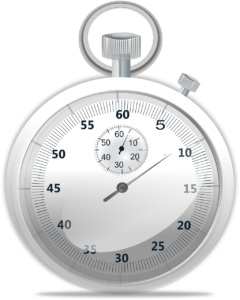 Remember when well written text, on the subject could get you to the top?
Remember when well written text, on the subject could get you to the top?
You’re probably too young, or maybe you’ve just forgotten about the short period in time when everything wasn’t about creating SEO content targeted at specific search terms.
But guess what!
That time is coming back and it’s coming back fast and hard. Quite soon we will be at the point when publishing search term optimized content will not be enough.
Here’s why:
Google is always changing. Recently we’ve seen some new changes where more and more emphasis is put on Time On Page when pages are ranked.
Yes, but what does it mean for me?
What it means, to put it bluntly, is that you cannot rely on the usual keyword optimized rubbish text that you’ve been buying for $.10 a word (or less.) Now you must actually provide content that is both keyword soaked and makes people read your page. For as long as possible.
Content that increases Time on Page
This is bad news for a lot of people. A lot of people who write content today are simply bad writers and they won’t be able to compete when the demands for quality rise.
Content prices will increase.
You will see prices go up. Yet it may cost you, but it will affect everyone alike, and maybe, just maybe, we will come to a state where less is more. It may turn out that the winner is the site with less but well-written content and the loser is the one with pages upon pages of keyword soaked word soup that nobody reads.
Do you know who this is good for?
People who are actually able to write something interesting will thrive. They will see demand and prices go up, while the mediocre writers will have to do with less, maybe a lot less.
Old media secrets to increasing Time on Page
 Weird as it may sound there’s a lot to be learned from old media here. Paper media, you know? Tabloids they’re called and they are considered the worst among the dinosaurs.
Weird as it may sound there’s a lot to be learned from old media here. Paper media, you know? Tabloids they’re called and they are considered the worst among the dinosaurs.
Here’s the thing:
- Tabloid journalists and editors know everything about reader behaviour and how to make people stay and read on.
- There’s research, quite a lot of it, about what people do when they a read a newspaper (Yes, on paper) and you can learn from this.
It’s been known by journalists intuitively and through research, for years.
But did you know?
- Even on paper, people don’t read newspaper articles. They read the summary and some of the beginning. Then they skip.
- People who read a whole news article seldom read it linearly, from beginning to end. They skip and jump back and forth through the text. They take a break to look at another article or ad on the same page and then come back.
- Most people who read an entire news article do all sorts of things, except read it from beginning to end.
What does this mean for the web?
- Don’t publish huge chunks of text. To break text into smaller units and add air is nothing new, but don’t just add air!
- Mix up your text chunks with related content, such as images, tables, figures and break-out quotes. This is hardly new, but you need to really work to make everything on the page relevant to the topic on hand.
- Make it easy to navigate around on the page. Everybody knows how to scroll, but perhaps the reader needs to be able to scroll back in five minutes to continue where they were. Add lots of unique visual cues to make it easier for the reader to find their way back.
Better content for increased Time on Page
There is still time to adapt. Plenty of time, actually, if you’re considering the pace of change on the web. You need to start thinking about your content.
Are you ready?
Give us a call at +357 95 768 469
